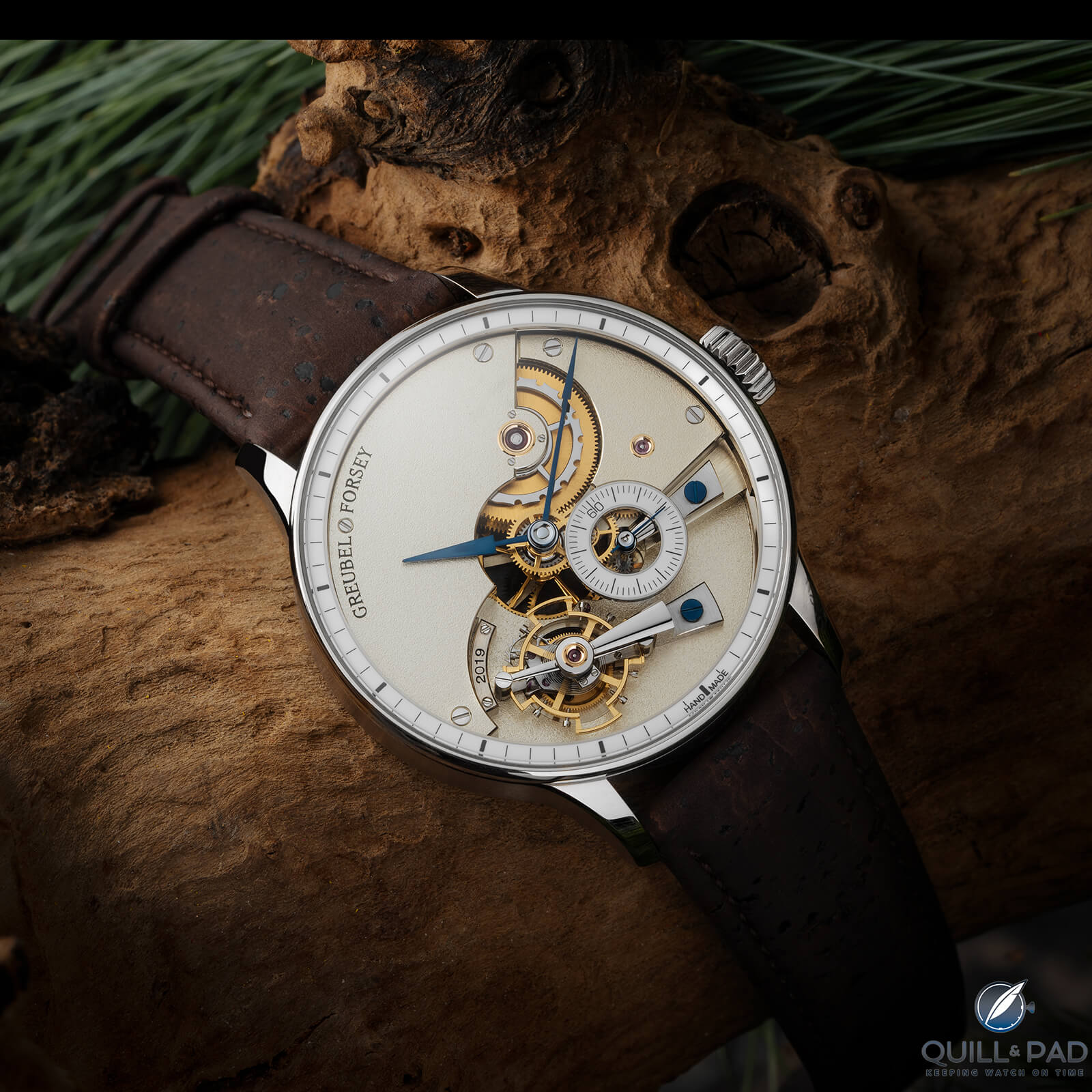———————————————————————————————–
Mirror polish with continuous rounding – a challenging tandem – distinguishes the enormous half-bridge mounting the .521-gram regulator. A voluminous and equally accomplished tourbillon cage resides beneath the bridge.

Greubel Forsey Hand Made 1 regulator with free sprung balance
While the balance wheel’s contemporary free-sprung architecture is a bit jarring against this antiquarian backdrop, its fabrication was strictly traditional.
The overcoil hairspring, purchased from suppliers in volume applications, here is the result of laborious cutting, rolling, and shaping.
Not all elements of homage are pure methodology, because nostalgic style abounds.

Frosted German silver finishing of the Greubel Forsey Hand Made 1
Bridges and plates are crafted from maillechort, an alloy of nickel, copper, and zinc often described as “German silver” in Teutonic applications. Frosted surfaces likely are achieved with a stiff brush of steel bristles rather the ancient method of acid-etching, but the visual effect is identical.
A three-quarter inspired bridge resides in the upper left third of the dial, and its sheer face adjacent to the tourbillon blazes with bright polish; a neat bevel finished with traditional wood links the vertical and horizontal planes.

Greubel Forsey Hand Made 1 dial
The barrel arbor rests in a golden chaton cup fixed by screws; this is how jewels were set before they could be reliably pressed directly into bridges.
Tourbillon detailing is rich, and because this is Greubel Forsey, even the sub-structure is handsome. The tiny escapement bridge below the balance exhibits crisp straight-grained horizontals and worthy micro-bevels.
There’s a small year-of-manufacture plaque nestled alongside the tourbillon; the caseback declares whether the example in question was one of two or three manufactured in the given year.
Those eight-hour screws are gorgeous. Hand turned, hand chamfered, and heat blued, they add a pop of color on both sides of the watch. I’ve never seen more pronounced slotting of a screw head. “Black” polishing certain screws – likely mirror finished on lapping paper or a tin plate – adds tonal variety.
Above the barrel assembly, a specular surfaced wheel with a notched rim reveals the presence of a stopworks; these mechanisms are employed to limit the top and bottom travel of the mainspring.
By retaining the spring in the fat part of its torque curve, the watchmaker ensures optimized performance while the timepiece is running.
———————————————————————————————–


